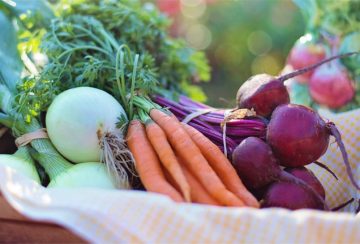Creating Your Own Vegetable Patch - Oakford Firewood and Mulch

Creating Your Own Vegetable Patch
- October 23, 2018
- Posted By admin
Lots of us dream of having our very own backyard veggie patch. Let’s face it, what’s not to like about growing your own food from scratch, and knowing that at least some of what you eat is garden fresh and has not been sitting in some supermarket warehouse cooler for an indeterminate amount of time?
It’s not difficult to get started – here are some tips for the basics, from sourcing cheap mulch in Perth to selecting veggies to grow.
- SUN: your vegetable garden will need plenty of sun, at least six hours per day.
- DELINEATE A PATCH: make sure your vegetables will have plenty of room to grow, and will not be competing with root systems from large shrubs and trees for water and nutrients. Make the garden long and narrow in preference to wide; you don’t want to have to trample plants in order to harvest your veggies. Use a length of string and a couple of stakes to mark out the patch.
- REMOVE EXISTING PLANT MATERIAL: eliminate weeds, grass, and existing plants. Dig in and turn the soil over the whole patch.
- PREPARE YOUR SOIL: add a thick layer of top quality mulch to the soil. (Oakford Firewood and Mulch delivers cheap mulch Perth-wide to your door). The soil bed needs to be rich, crumbly, and moistened. Turn the garden bed, mixing mulch into the old soil, and wait for a couple of weeks to allow it to settle and for the mulch to break down. Remove any weed matter that pops up.
- PREPARE THE GARDEN BED: opting for a raised bed will create a deep garden with effective water drainage. Turn the base soil and add a simple wooden or brick border. Consider stakes for climbing vegetable plants.
- CHOOSE YOUR VEGGIES: You are limited only by your taste, imagination, and the season..
Winter Vegetables: include garlic, asparagus, shallots, lettuce, peas, silver beet, spinach, rhubarb, and broad beans
Spring Vegetables: include cabbage, carrots, tomatoes, lettuce, cucumber, peas, potatoes, Asian vegetables, ginger, zucchini, capsicum,
Summer Vegetables: include parsnips, celery, cucumber, endive, sweet corn, squash, witlof, radish, tomato, cauliflower, carrot, beetroot, Brussels sprouts
Autumn vegetables: include Asian greens, carrot, broccoli, radish, rocket, spinach, turnip, Swede, leek, cabbage, onion, peas, parsley
- COMPANION PLANTS: these help deter pests and make your vegetable plants healthier. Herbs are a great idea:
- basil protects tomatoes and enhances their flavour
- garlic protects tomatoes from aphids and worms
- thyme protects cabbage from flies and worms, and also attracts pollinating bees to eggplant, tomato and potato
- chives prevent mildew
- catnip controls flea beetles (and your cat will love it)
- marigolds destroy root eating bacteria
- horseradish protects potatoes
- EASY PLANTS FOR BEGINNERS: mint, silver beet, zucchini, leafy greens, cherry tomatoes, squash, cucumber, shallots, and a myriad of herbs.
HAVE FUN!
